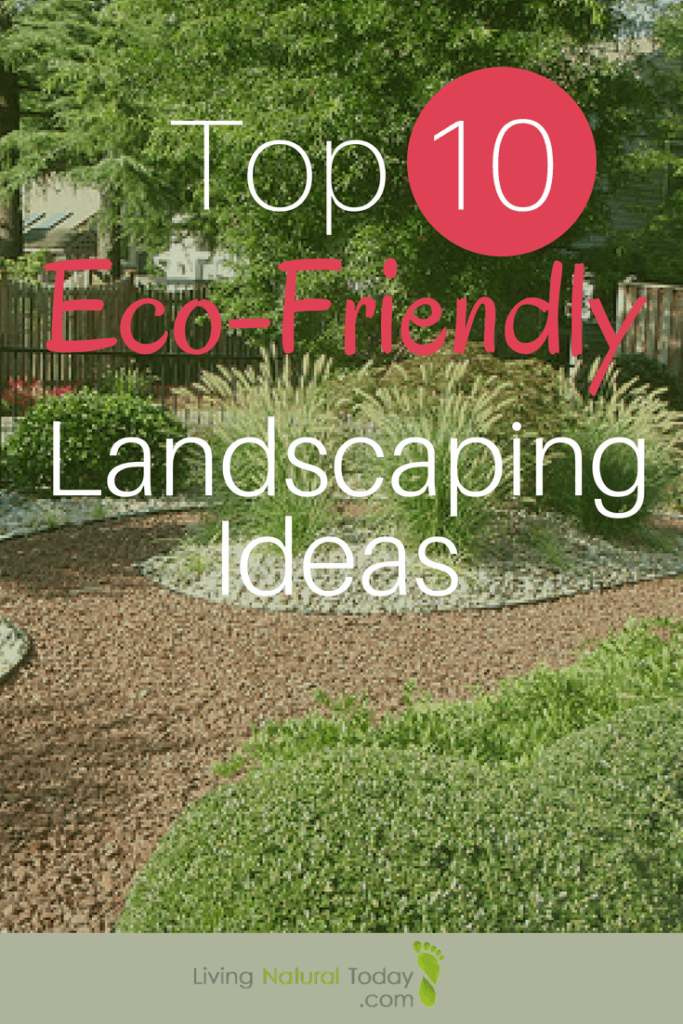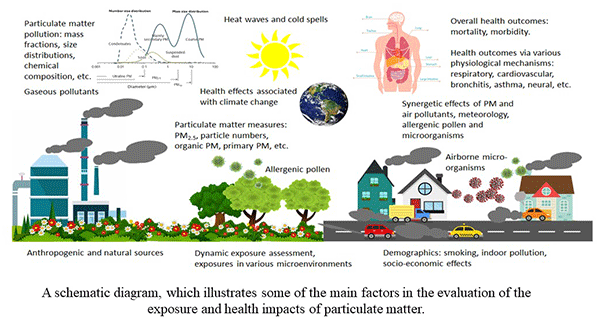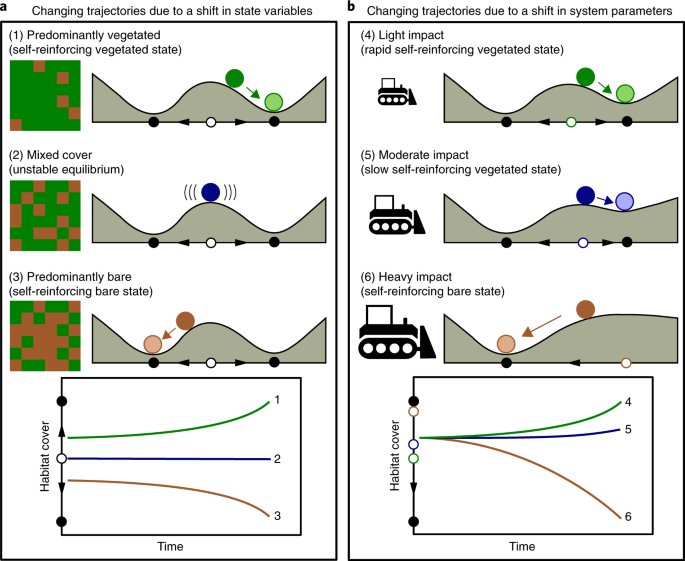Thinking about how to make your home more sustainable? Look no further! In this article, we will provide you with 10 eco-friendly landscaping tips that are perfect for homeowners. From conserving water to promoting biodiversity, these tips will not only help you create a beautiful outdoor space but also contribute to a greener and healthier planet. Let’s explore how you can make a positive impact starting right in your own backyard!
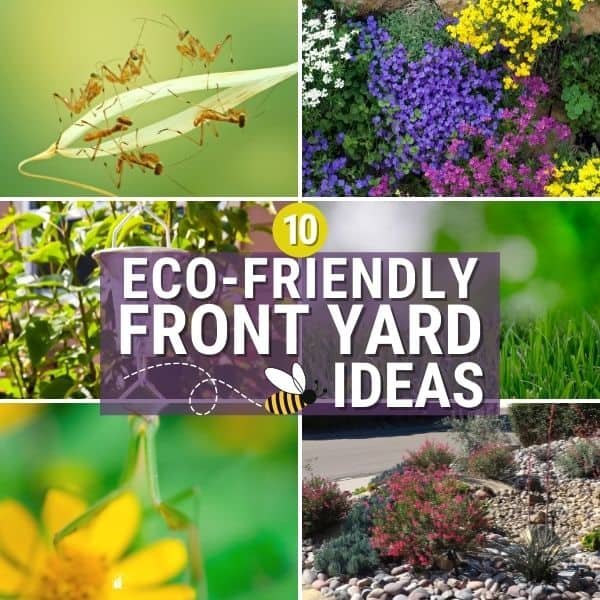
This image is property of www.mystayathomeadventures.com.
1. Choose Native Plants
Benefits of using native plants
When it comes to creating an eco-friendly landscape, one of the best decisions you can make is to choose native plants. Native plants are those that naturally occur in a specific region and have evolved to thrive in the local climate, soil, and ecosystem. By incorporating native plants into your landscaping, you can enjoy a range of benefits. Firstly, native plants are well-adapted to the local climate, which means they require less water, fertilizer, and maintenance compared to non-native plants. This can help you save on resources and reduce your overall impact on the environment. Additionally, native plants provide food and shelter for local wildlife, supporting biodiversity and creating a balanced ecosystem in your yard.
Factors to consider when selecting native plants
When selecting native plants for your landscaping, it’s important to consider a few factors. First and foremost, you need to identify the specific region you are in, as native plants can vary from one area to another. Research the native plant species that are indigenous to your region and take note of their growth habits, specific requirements, and adaptability. Consider the amount of sunlight, soil type, and moisture levels in your yard, as these factors will influence the success of your native plant choices. You can also consult with local experts or visit native plant nurseries for advice and guidance in selecting the right plants for your yard.
Examples of native plants for different regions
To give you some inspiration, here are a few examples of native plants for different regions:
- Northeastern United States: Eastern Redbud (Cercis canadensis), Bee Balm (Monarda didyma), and Virginia Bluebells (Mertensia virginica).
- Southwest United States: Desert Marigold (Baileya multiradiata), Agave (Agave spp.), and Texas Sage (Leucophyllum spp.).
- Pacific Northwest: Douglas Fir (Pseudotsuga menziesii), Sword Fern (Polystichum munitum), and Red Flowering Currant (Ribes sanguineum).
Remember to research and choose native plants that are suitable for your specific region to ensure the best chance of success in your eco-friendly landscaping efforts.
2. Practice Water Conservation
Benefits of water conservation in landscaping
Water is a precious and limited resource, and every drop counts. By practicing water conservation in your landscaping, you can help reduce water usage and promote sustainability. Conserving water not only benefits the environment but can also save you money on water bills. When you implement water-saving techniques, you’re ensuring that your plants receive just the right amount of water they need for healthy growth, without wasting any excess. This is especially important in dry or drought-prone regions where water scarcity is a concern.
Methods to reduce water usage in the garden
There are several methods you can employ to reduce water usage in your garden. One of the most effective ways is to use efficient irrigation systems such as drip irrigation or soaker hoses. These systems deliver water directly to the roots of plants, minimizing evaporation and maximizing water use efficiency. Another method is to group plants with similar water needs together, so you can water them more efficiently without overwatering or underwatering any particular plant. Mulching your garden beds with organic mulch, as mentioned in the next section, can also help to conserve moisture by reducing evaporation and keeping the soil cool.
Irrigation system options for efficient watering
When it comes to choosing an irrigation system for your eco-friendly landscape, you have several options. Drip irrigation is a popular choice as it delivers water directly to the roots of plants, minimizing water loss due to evaporation or wind drift. Soaker hoses are another effective option, as they release water evenly along their length, allowing it to seep into the soil slowly. This ensures that water is delivered where it’s needed most without wastage. Other options include smart irrigation systems that use sensors to detect soil moisture levels and adjust watering accordingly, as well as rainwater harvesting systems that utilize collected rainwater for irrigation purposes. Choose the system that best suits your needs and landscape to ensure water is used efficiently in your garden.
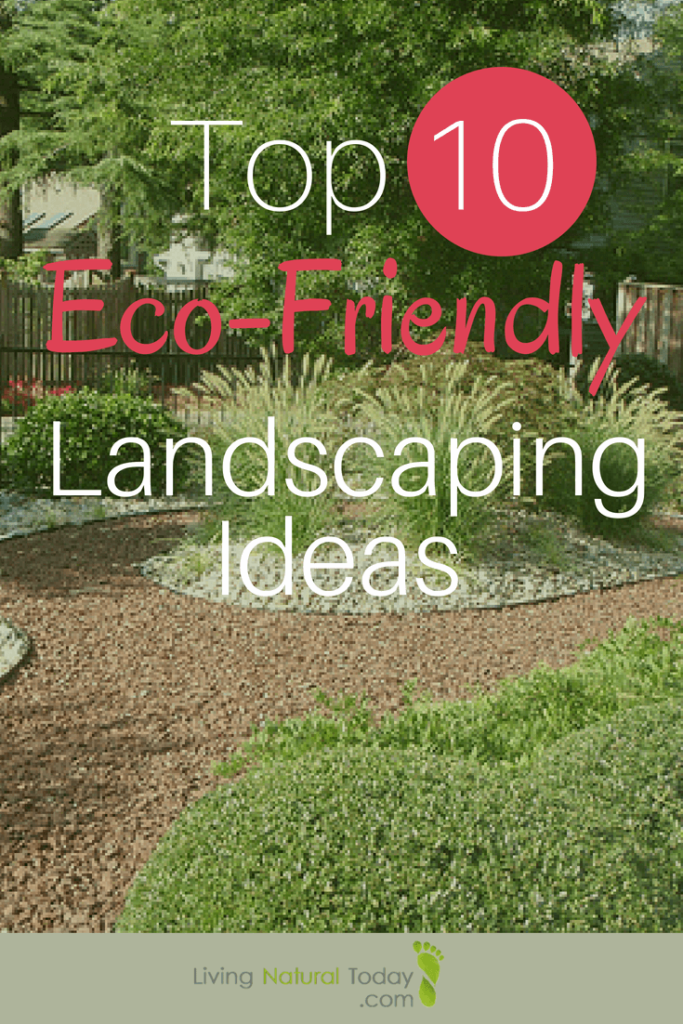
This image is property of www.livingnaturaltoday.com.
3. Use Organic Mulch
Advantages of organic mulch
Using organic mulch in your landscaping offers numerous advantages. Firstly, organic mulch helps to conserve moisture in the soil by reducing evaporation. It acts as a barrier between the soil and the air, keeping the soil cool and retaining moisture for longer periods. This is particularly beneficial during hot and dry weather conditions, as it reduces the need for frequent watering. Organic mulch also helps to suppress weeds by preventing their germination and blocking sunlight from reaching their seeds. As a result, you’ll spend less time and effort in weed control. Additionally, organic mulch breaks down over time, enriching the soil with essential nutrients and improving its fertility.
Types of organic mulch and their benefits
There are various types of organic mulch to choose from, each with its own benefits. Some popular options include shredded bark or wood chips, straw, compost, and leaves. Shredded bark or wood chips are commonly used mulches that not only conserve moisture but also add an attractive aesthetic to your landscape. Straw is an affordable and readily available option that works well in vegetable gardens. Compost, on the other hand, not only acts as a mulch but also nourishes the soil as it decomposes. Leaves, whether shredded or whole, make excellent mulch and are an abundant resource in the fall. They create a natural forest floor look and break down quickly, enriching the soil in the process.
Proper application and maintenance of mulch
To ensure the best results, it’s important to apply and maintain your organic mulch properly. Start by cleaning up any debris or weeds in the area you plan to mulch. Apply a layer of mulch that is approximately 2-4 inches thick, taking care to avoid piling it against the base of plants or tree trunks, as this can promote rot and other diseases. Leave a small gap around the base of each plant to allow for air circulation. Replenish the mulch as needed, especially as it decomposes over time. This will help maintain its effectiveness in conserving moisture and suppressing weeds. Remember to water the mulch thoroughly after application to help it settle and stay in place.
4. Implement Rainwater Harvesting
Benefits of rainwater harvesting
Rainwater harvesting is a sustainable practice that involves collecting and storing rainwater for later use. Implementing rainwater harvesting in your landscape offers several benefits. Firstly, it reduces the demand for freshwater and eases the strain on local water resources. Instead of relying solely on municipal water or groundwater for irrigation, you can utilize the free and abundant rainwater available. Rainwater is also free from harmful chemicals typically found in treated water, making it healthier for plants and soil. In addition, rainwater harvesting provides a backup water supply during droughts or water restrictions, ensuring that your plants continue to receive the water they need.
Methods and systems for collecting and storing rainwater
There are various methods and systems you can choose from for collecting and storing rainwater. One simple method is to collect rainwater in barrels or containers placed strategically around your yard. These containers can be connected to downspouts or gutter systems, allowing rainwater to flow directly into them. Another option is to install a rain chain or a rainwater diverting system that directs rainwater into a designated storage area such as a rain garden or pond. If you’re looking for a more extensive and long-term solution, you can opt for underground cisterns or large storage tanks. These systems can store a significant amount of rainwater and provide a reliable water supply for your landscape.
Ideas for using harvested rainwater in landscaping
Once you’ve collected and stored rainwater, there are numerous ways to use it in your landscaping. You can use it for watering your plants, whether that be through a hose or a drip irrigation system. It can also be used for filling birdbaths, fountains, or other water features in your yard. Harvested rainwater is ideal for vegetable gardens, as it reduces the risk of contamination from chemicals found in treated water. You can even use the water for washing outdoor surfaces, tools, or vehicles. By utilizing harvested rainwater, you’re maximizing the efficiency of your water usage and minimizing your impact on local water sources.
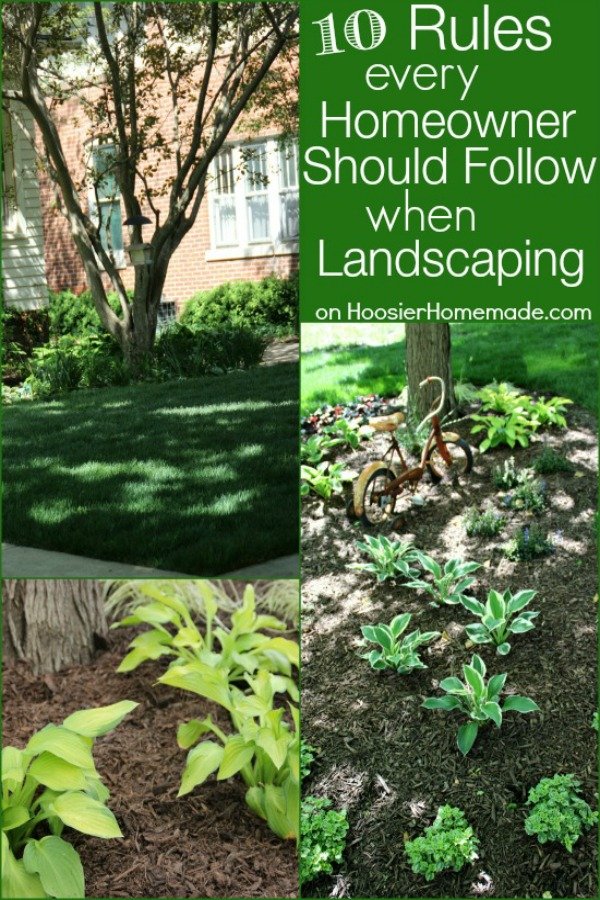
This image is property of hoosierhomemade.com.
5. Compost Yard Waste
Importance of composting yard waste
Composting yard waste is a fantastic way to reduce waste, enrich the soil, and nurture your plants. Yard waste, such as grass clippings, leaves, and pruned branches, can take up a significant amount of space in landfills. By composting this waste instead, you divert it from the landfill and create a valuable resource for your garden. Compost is an organic matter that has undergone decomposition, resulting in a nutrient-rich soil amendment. It improves soil structure, enhances nutrient availability, and promotes beneficial microbial activity. Composting yard waste not only reduces your carbon footprint but also saves you money on fertilizers and soil amendments.
How to create and maintain a compost pile
Creating and maintaining a compost pile is relatively simple and requires minimal effort. Start by selecting a suitable location in your yard for the compost pile. It should be in a well-drained area and easily accessible for regular turning and maintenance. To build the pile, alternate layers of green (nitrogen-rich) and brown (carbon-rich) materials. Green materials include grass clippings, plant trimmings, and kitchen scraps, while brown materials include dried leaves, shredded newspaper, and small branches. Keep the compost pile moist, but not soggy, and regularly turn it to promote aeration and decomposition. Depending on the size and composition of the pile, compost can be ready to use in a few months to a year.
Ways to use compost in the garden
Once your compost is ready, there are several ways you can use it in your garden. Spread a layer of compost on top of your garden beds to improve soil fertility and moisture-retention. Work compost into the soil when planting new plants or as a top dressing for established plants. Compost can also be used as a potting mix amendment for indoor or outdoor container plants. Another way to utilize compost is by creating compost tea, a nutrient-rich liquid fertilizer. Simply steep a handful of compost in a bucket of water for a few days and use the resulting liquid to feed your plants. The options for using compost are endless, and by incorporating it into your gardening routine, you’re nourishing your plants while reducing waste.
6. Opt for Natural Pest Control
Benefits of natural pest control methods
When it comes to pest control in your eco-friendly landscape, it’s best to opt for natural and environmentally-friendly methods. Natural pest control methods offer several benefits. Firstly, they are safer for the environment, as they do not introduce harmful chemicals into the ecosystem. By avoiding the use of chemical pesticides, you protect beneficial insects, birds, and other wildlife that play a crucial role in pollination and natural pest control. Natural pest control methods are also generally safer for you, your family, and your pets, as you won’t be exposed to toxic chemicals. Lastly, natural pest control methods promote a balanced ecosystem, where pest populations are kept in check naturally, without causing harm to other organisms.
Different approaches for pest prevention and management
When it comes to preventing and managing pests naturally, there are several approaches you can take. Firstly, create a healthy and biodiverse garden by incorporating native plants, providing food, water, and shelter for beneficial insects and birds. These natural predators, such as ladybugs, lacewings, and birds, help to control pest populations by feeding on them. Additionally, practice good garden hygiene by removing fallen leaves, dead plant material, and other debris that can harbor pests. Another effective method is to physically remove pests by handpicking or using traps. This can be especially useful for larger pests like slugs or caterpillars. Lastly, consider using natural pest repellents such as companion planting, neem oil, or soap sprays. These repellents can deter pests without harming the environment.
Examples of effective natural pest control remedies
Here are a few examples of effective natural pest control remedies:
- Companion planting: Planting marigolds or nasturtiums near your vegetables can repel pests such as aphids or whiteflies.
- Neem oil: Neem oil is a natural pesticide derived from the seeds of the neem tree. It is effective against a wide range of pests, including aphids, mites, and beetles.
- Soap spray: Mix a few drops of mild liquid soap with water and spray it on plants affected by soft-bodied pests like aphids or mealybugs. The soap suffocates the pests, effectively controlling their population.
Remember to research the specific pests in your area and choose the most appropriate natural control methods. By opting for natural pest control, you’re not only protecting your plants but also contributing to a healthier and more sustainable environment.
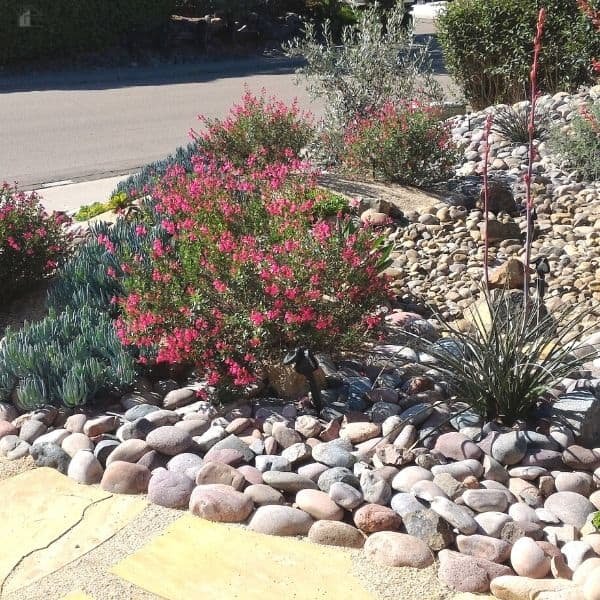
This image is property of www.mystayathomeadventures.com.
7. Reduce Chemical Usage
Negative impacts of chemical use in landscaping
The use of chemicals in landscaping, such as synthetic fertilizers and pesticides, can have significant negative impacts on the environment. Chemical fertilizers can leach into groundwater or runoff into nearby water bodies, causing water pollution and toxic algae blooms. They also contribute to air pollution when volatile nitrogen compounds are released into the atmosphere. Pesticides, on the other hand, not only harm targeted pests but also non-targeted insects, birds, and even beneficial organisms. They can disrupt the natural balance of ecosystems and contribute to the decline of pollinators like bees and butterflies. Additionally, chemical usage can lead to the development of pesticide resistance in pests, requiring stronger and more toxic chemicals over time.
Alternatives to chemical fertilizers and pesticides
To reduce the use of chemicals in your landscaping, it’s important to explore alternatives that are safe for both your plants and the environment. Organic fertilizers, such as compost, manure, or bone meal, provide essential nutrients to the soil without harmful side effects. They improve soil fertility, feed beneficial microorganisms, and promote overall plant health. Additionally, there are numerous natural pest control methods, as mentioned in the previous section, that can be employed to manage pests effectively without resorting to chemical pesticides. These natural alternatives may require more patience and effort, but they offer long-term benefits for your landscape and the environment.
Safe and eco-friendly alternatives for weed control
Weeds can be a persistent problem in any garden, but there are safe and eco-friendly alternatives for weed control. One method is to manually remove weeds by hand-weeding or using a garden tool like a hoe to cut them off at the soil surface. Regularly removing weeds prevents them from establishing and competing with your desirable plants. Another effective method is the use of organic weed suppressants such as corn gluten meal or mulching. Corn gluten meal is a natural byproduct of corn processing that prevents weed seeds from germinating. Applying a thick layer of mulch around your plants can also smother weed growth by depriving them of sunlight. Both methods are safe for the environment and offer long-lasting weed control.
8. Create a Wildlife-Friendly Habitat
Importance of promoting biodiversity in your yard
Creating a wildlife-friendly habitat in your yard is not only beneficial for the environment but also offers an opportunity to witness the beauty of nature up close. Promoting biodiversity in your yard provides a safe haven for a variety of wildlife, including birds, butterflies, bees, and beneficial insects. Biodiversity is essential as it maintains a balance in ecosystems and supports natural processes such as pollination and pest control. By inviting wildlife into your landscape, you contribute to the conservation of native species and play a vital role in preserving local biodiversity.
Ways to attract and support wildlife with your landscaping choices
There are numerous ways you can attract and support wildlife with your landscaping choices. Firstly, incorporate native plants into your garden, as they provide food sources and habitat for local wildlife. Choose a diverse range of plants that bloom at different times of the year to ensure a constant food supply. Provide a water source such as a birdbath, pond, or even a shallow dish with water for birds and insects to drink and bathe. Avoid using harmful pesticides or herbicides that can harm wildlife directly or lower their food availability. Leave areas of your yard undisturbed, with fallen logs or leaf piles, to provide shelter for wildlife. Installing birdhouses or nesting boxes can also attract nesting birds to your yard.
Designing a wildlife-friendly garden
When designing a wildlife-friendly garden, consider the following tips:
- Create layers of vegetation: Incorporate plants of varying heights, such as tall trees, shrubs, and groundcovers, to provide different levels of habitat for wildlife.
- Include nectar-rich flowers: Choose flowers that provide nectar for butterflies, bees, and hummingbirds. Examples include coneflowers, salvias, and butterfly bushes.
- Plant for all seasons: Select plants that bloom at different times throughout the year to ensure a continuous food source for wildlife.
- Provide nesting and shelter opportunities: Install birdhouses or nesting boxes for cavity-nesting birds, and leave areas of your yard untouched to create natural shelter for wildlife.
By designing your landscape with wildlife in mind, you’ll not only enjoy a beautiful and vibrant garden but also play a crucial role in supporting local biodiversity.

This image is property of www.hippo.com.
9. Conserve Energy with Proper Lighting
Energy-efficient outdoor lighting options
Proper lighting can enhance the beauty and functionality of your outdoor spaces, but it’s important to choose energy-efficient options to minimize your environmental impact. LED (Light Emitting Diode) lighting is an excellent choice for energy-efficient outdoor lighting. LED lights use significantly less energy than traditional incandescent or halogen lights and have a longer lifespan. They are also available in a variety of colors and styles to suit your aesthetic preferences. Solar-powered lights are another energy-efficient option that harnesses the sun’s energy to power outdoor lighting. These lights store solar energy during the day and automatically illuminate at night, eliminating the need for electricity.
Tips for reducing energy consumption in landscape lighting
To further reduce energy consumption in your landscape lighting, consider implementing the following tips:
-
Use motion sensors or timers: Install motion sensors or timers for outdoor lighting to ensure that lights are only on when needed. This minimizes unnecessary energy consumption during periods of low or no activity.
-
Opt for low-voltage lighting: Low-voltage lighting systems operate at 12 volts, which is safer and more energy-efficient than traditional high-voltage systems. They provide adequate illumination while using less power.
-
Position lights strategically: Consider the placement of lights to maximize their effectiveness and minimize the number of fixtures needed. Use light shields or appropriate fixtures to prevent light pollution and ensure focus on specific areas.
By being mindful of energy consumption in your landscape lighting choices, you can save on electricity costs and lessen the environmental impact associated with traditional lighting methods.
10. Maintain and Monitor
Regular maintenance practices for an eco-friendly landscape
Maintaining an eco-friendly landscape requires regular care and attention. Here are some essential maintenance practices to keep in mind:
-
Stay on top of watering: Monitor the moisture levels in your landscape regularly and adjust watering accordingly. Overwatering can lead to water waste and increase the risk of plant diseases, while underwatering can stress or damage plants.
-
Prune and trim responsibly: Pruning and trimming plants helps maintain their shape and encourages healthy growth, but it’s important to do so responsibly. Prune during the appropriate season and follow proper pruning techniques to minimize stress and damage to plants.
-
Regularly weed and monitor pests: Remove weeds promptly to prevent them from competing with your plants for resources. Regularly inspect your plants for pests and diseases, intervening early with natural control methods to prevent infestations from spreading.
-
Monitor soil health: Check the condition of your soil regularly, paying attention to its moisture levels, nutrient content, and pH. Consider conducting soil tests periodically to determine if amendments are needed to maintain optimal plant health.
Identifying and addressing potential environmental issues
Monitoring your eco-friendly landscape also involves identifying and addressing potential environmental issues. Keep an eye out for signs of soil erosion, water runoff, or drainage problems, which can impact your landscape’s stability and lead to pollution of nearby water bodies. Address these issues promptly by implementing erosion control measures, redirecting water flow, or consulting with landscaping professionals if needed. Additionally, be aware of signs of plant diseases, nutrient deficiencies, or invasive species. Timely action can help prevent the spread of these issues and maintain the overall health and harmony of your landscape.
Monitoring and adjusting your landscaping practices for sustainability
Regularly monitoring and adjusting your landscaping practices for sustainability is crucial for maintaining an eco-friendly environment. Keep track of your water usage, energy consumption, and waste production to identify areas where improvements can be made. Explore new methods, technologies, and resources that align with sustainable practices. Stay informed about the latest developments in eco-friendly landscaping and incorporate them into your routine. By maintaining a proactive, monitoring, and adaptive approach, you can ensure that your eco-friendly landscape continues to thrive and contribute positively to the environment for years to come.
In conclusion, eco-friendly landscaping is a rewarding endeavor that benefits both your home and the environment. By choosing native plants, practicing water conservation, using organic mulch, implementing rainwater harvesting, composting yard waste, opting for natural pest control, reducing chemical usage, creating a wildlife-friendly habitat, conserving energy in lighting, and maintaining and monitoring your landscape, you can create a sustainable and beautiful outdoor space. These tips allow you to minimize your environmental impact, promote biodiversity, and enjoy the beauty and health benefits of nature right at your doorstep. So, go ahead and start transforming your landscape into a haven of eco-friendliness and natural beauty!

